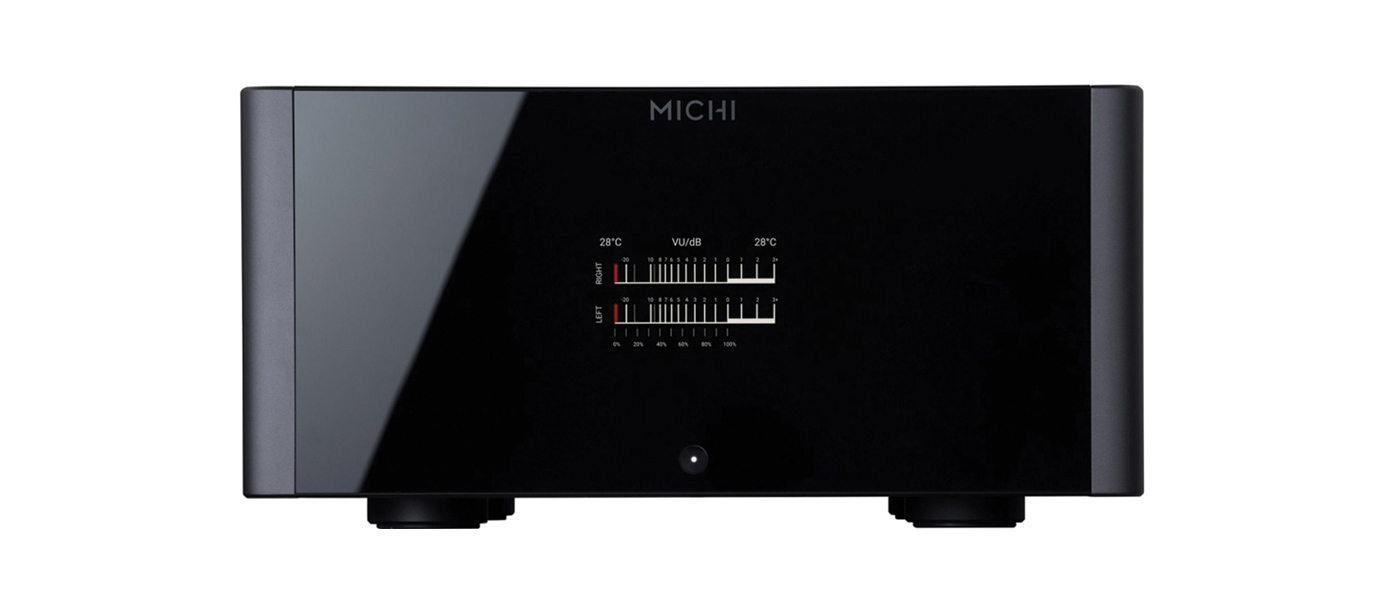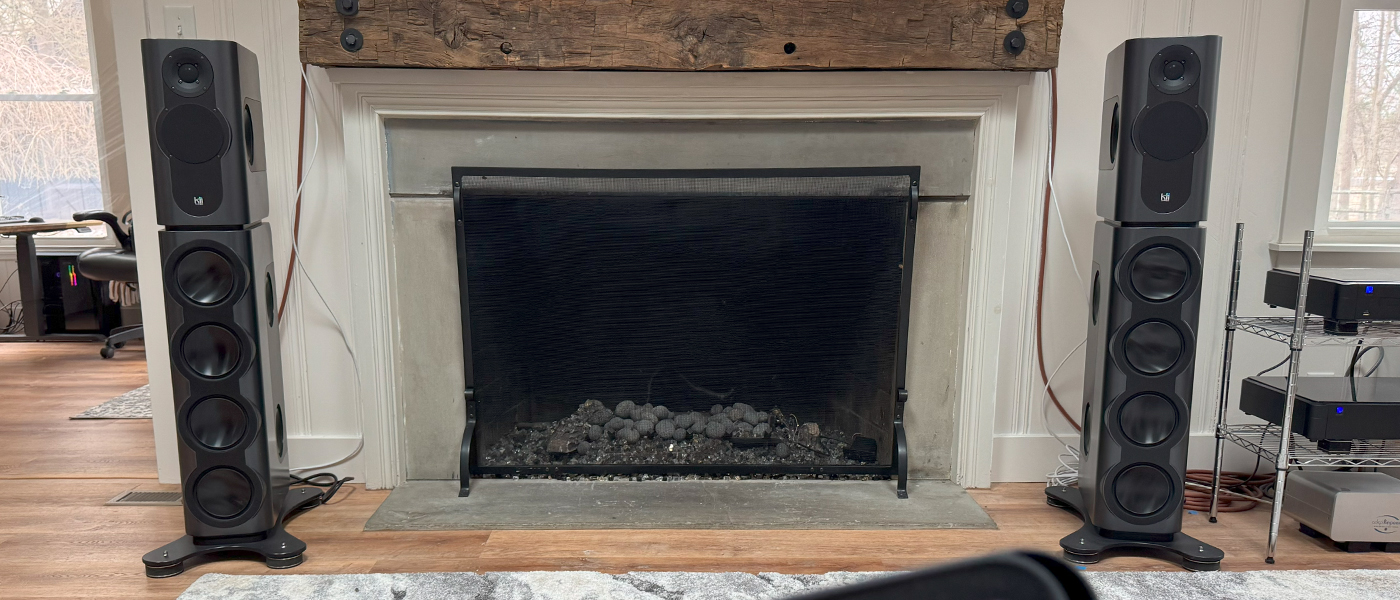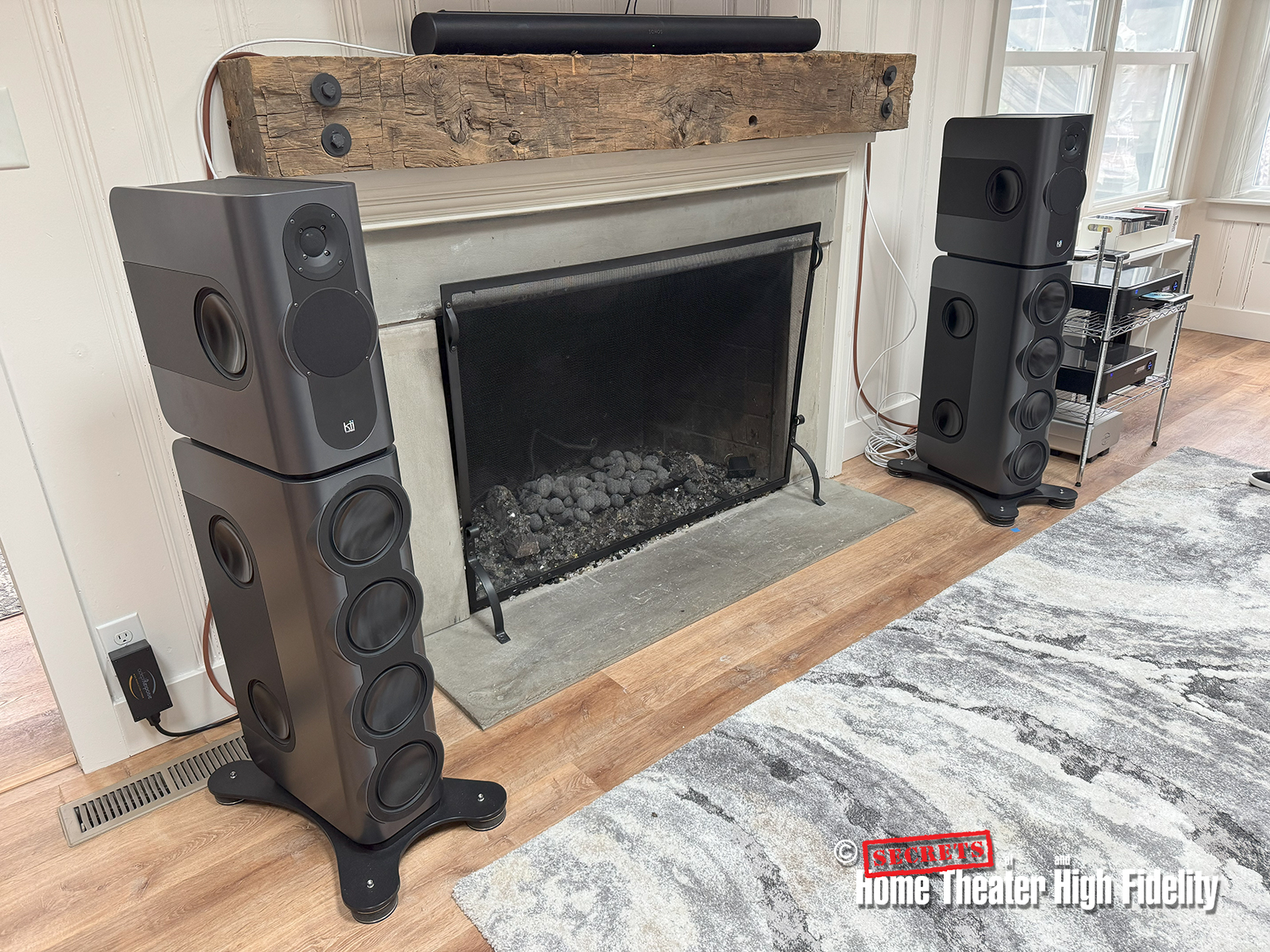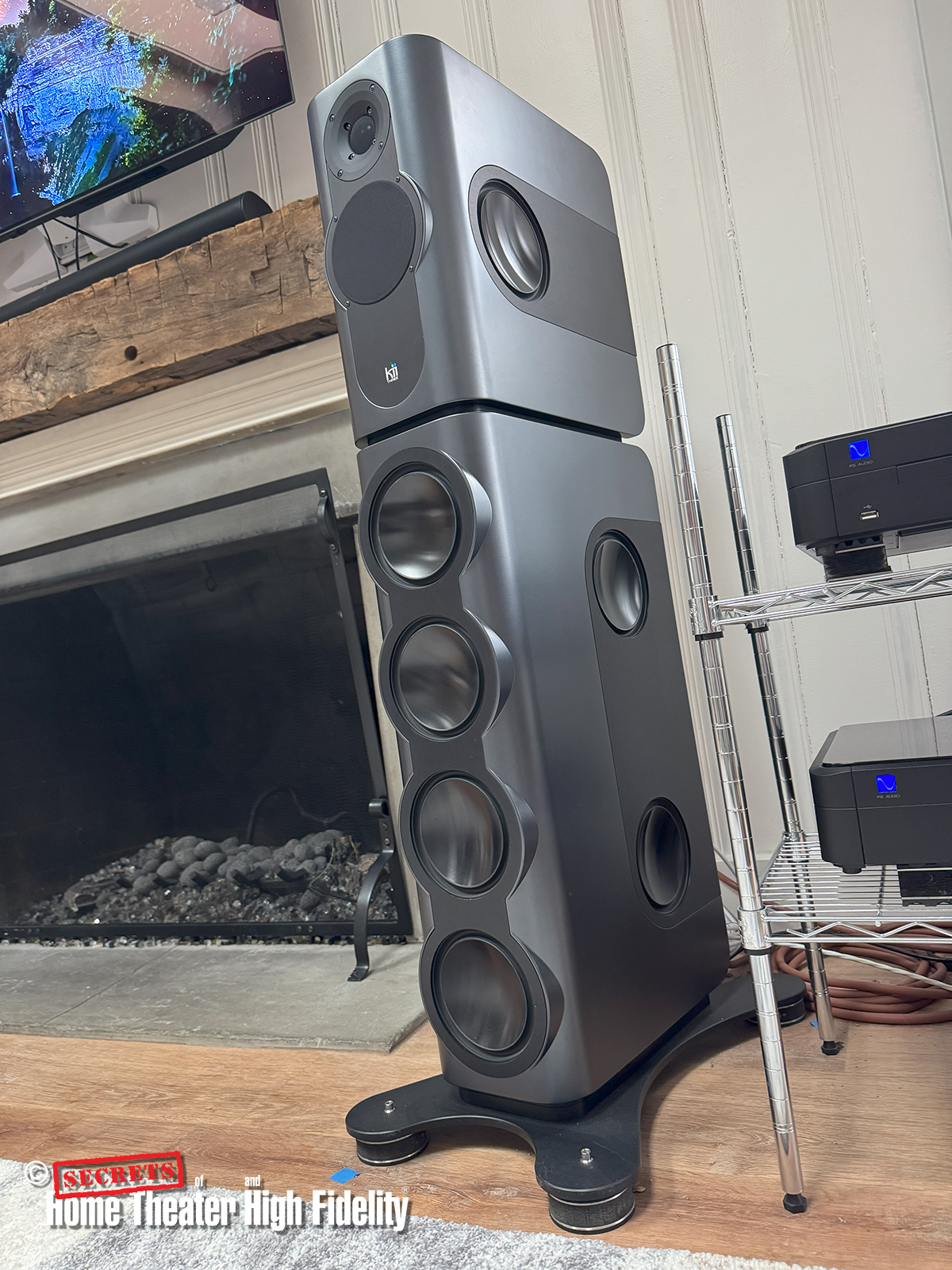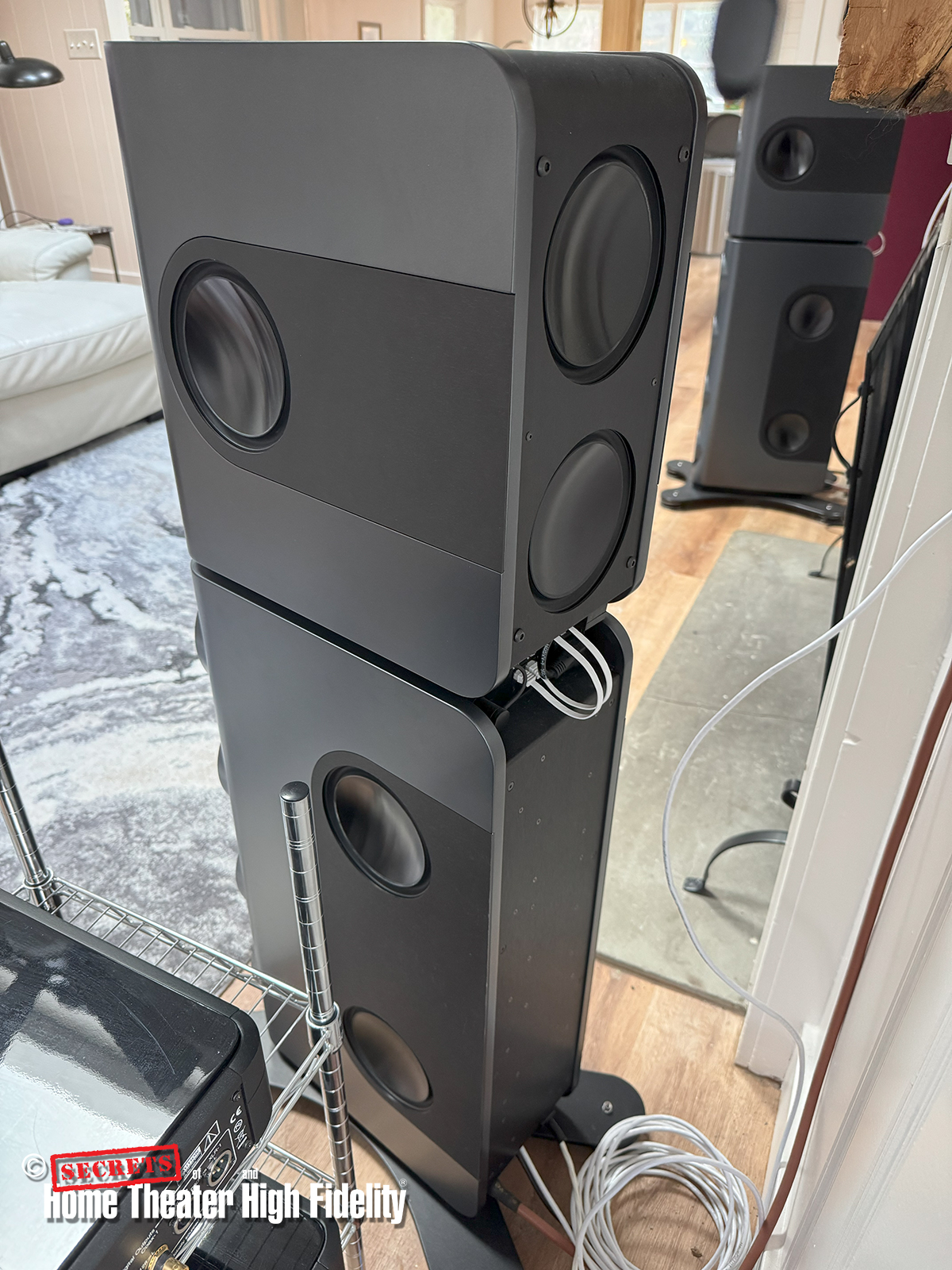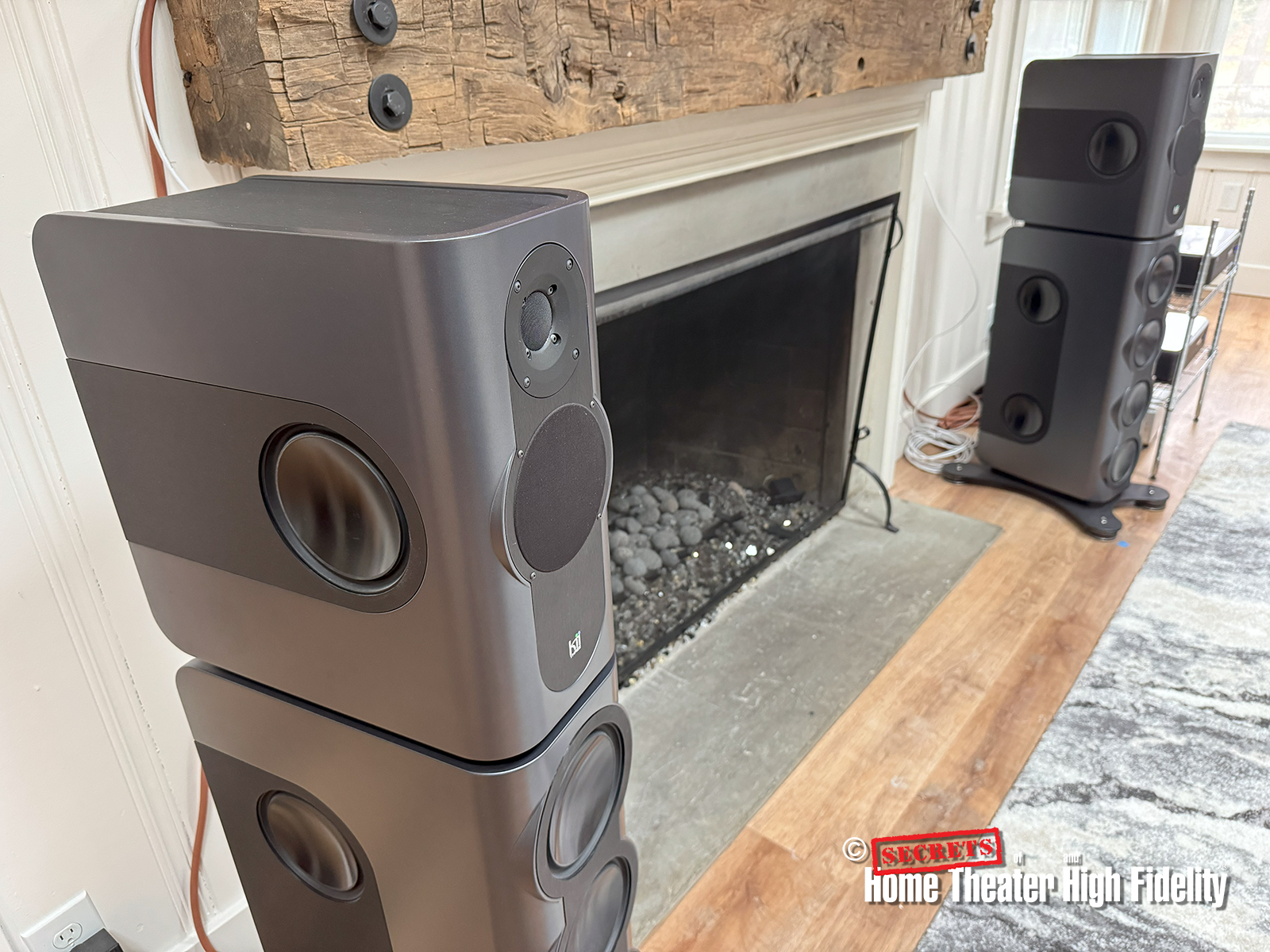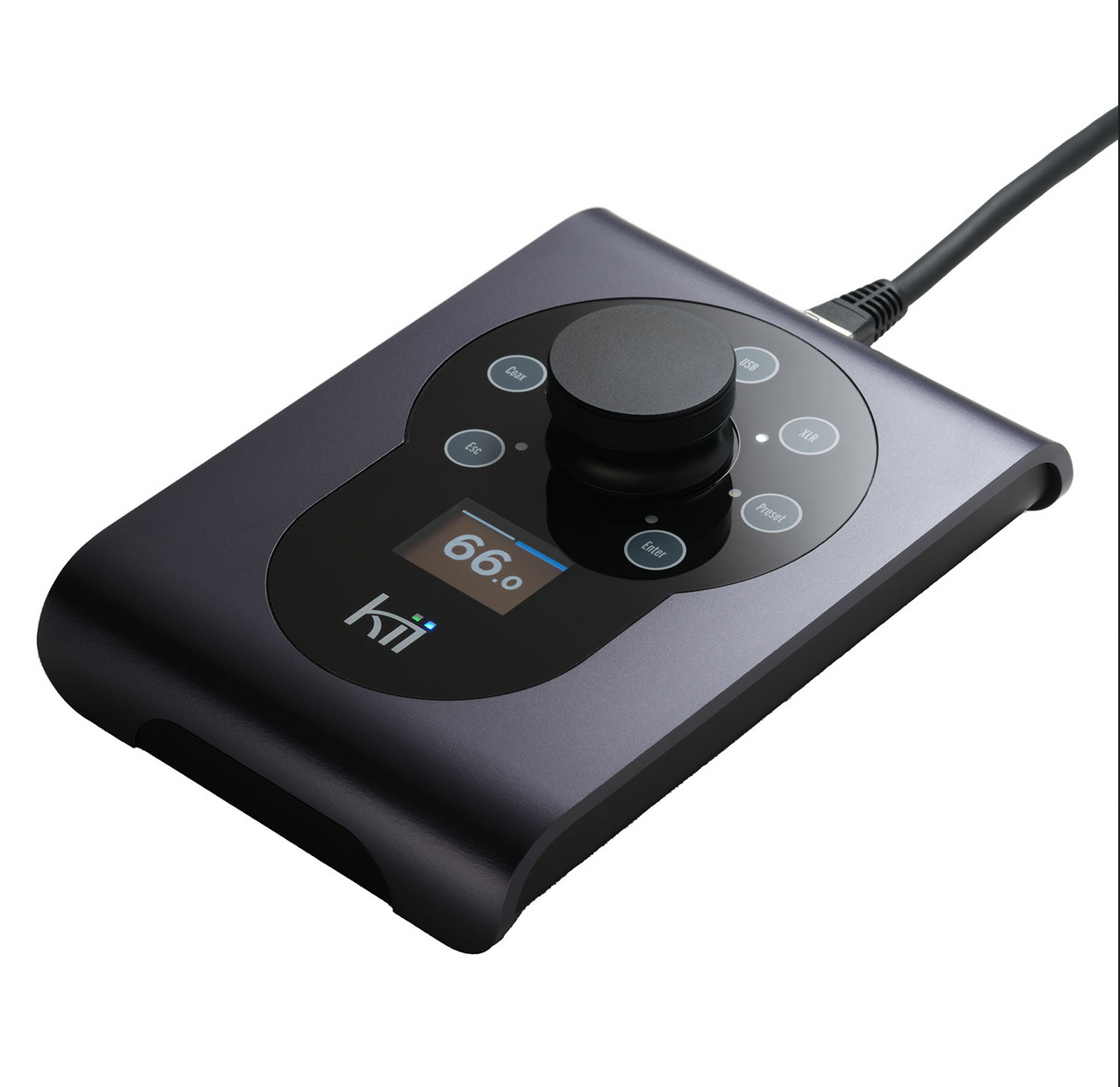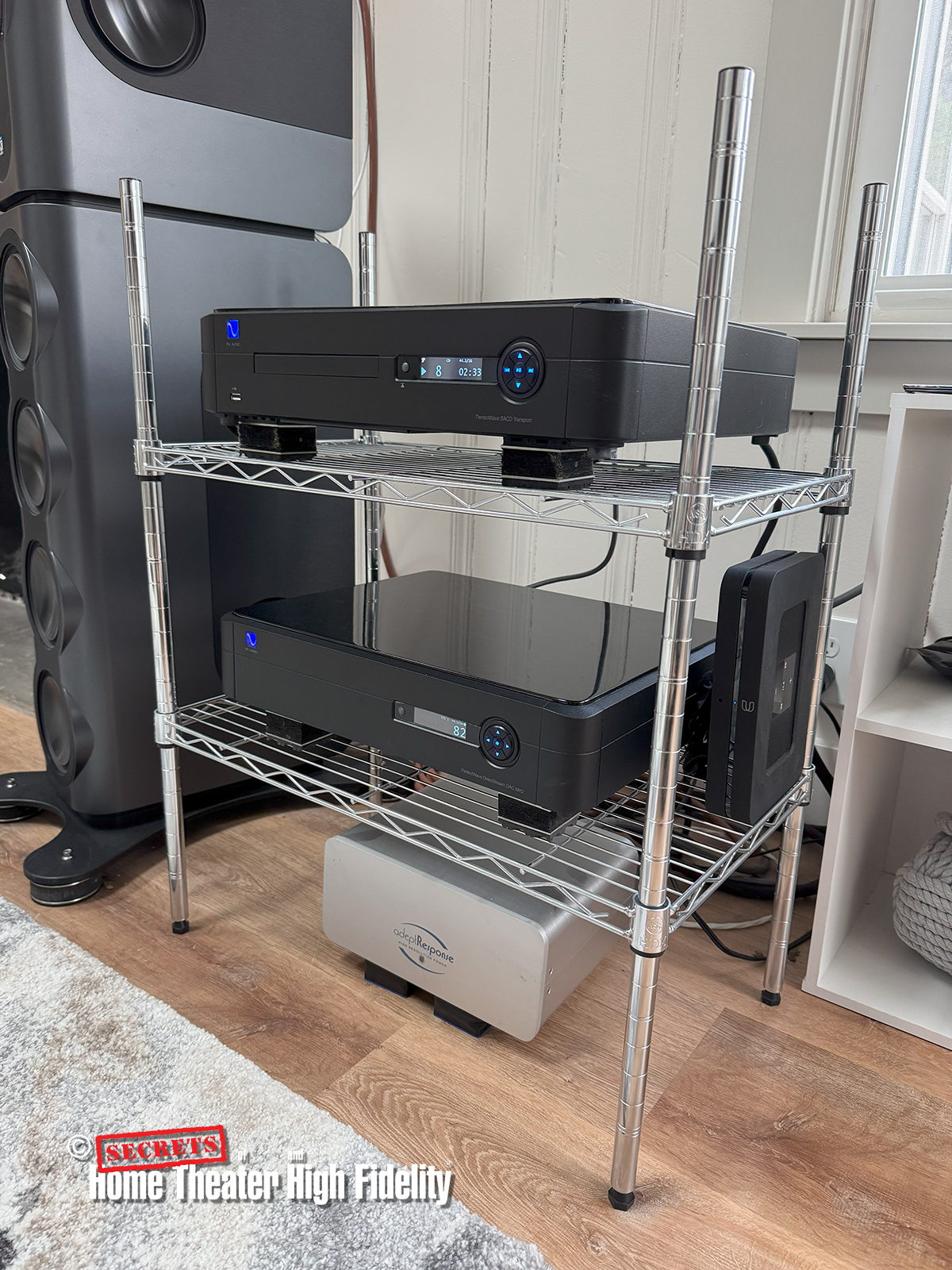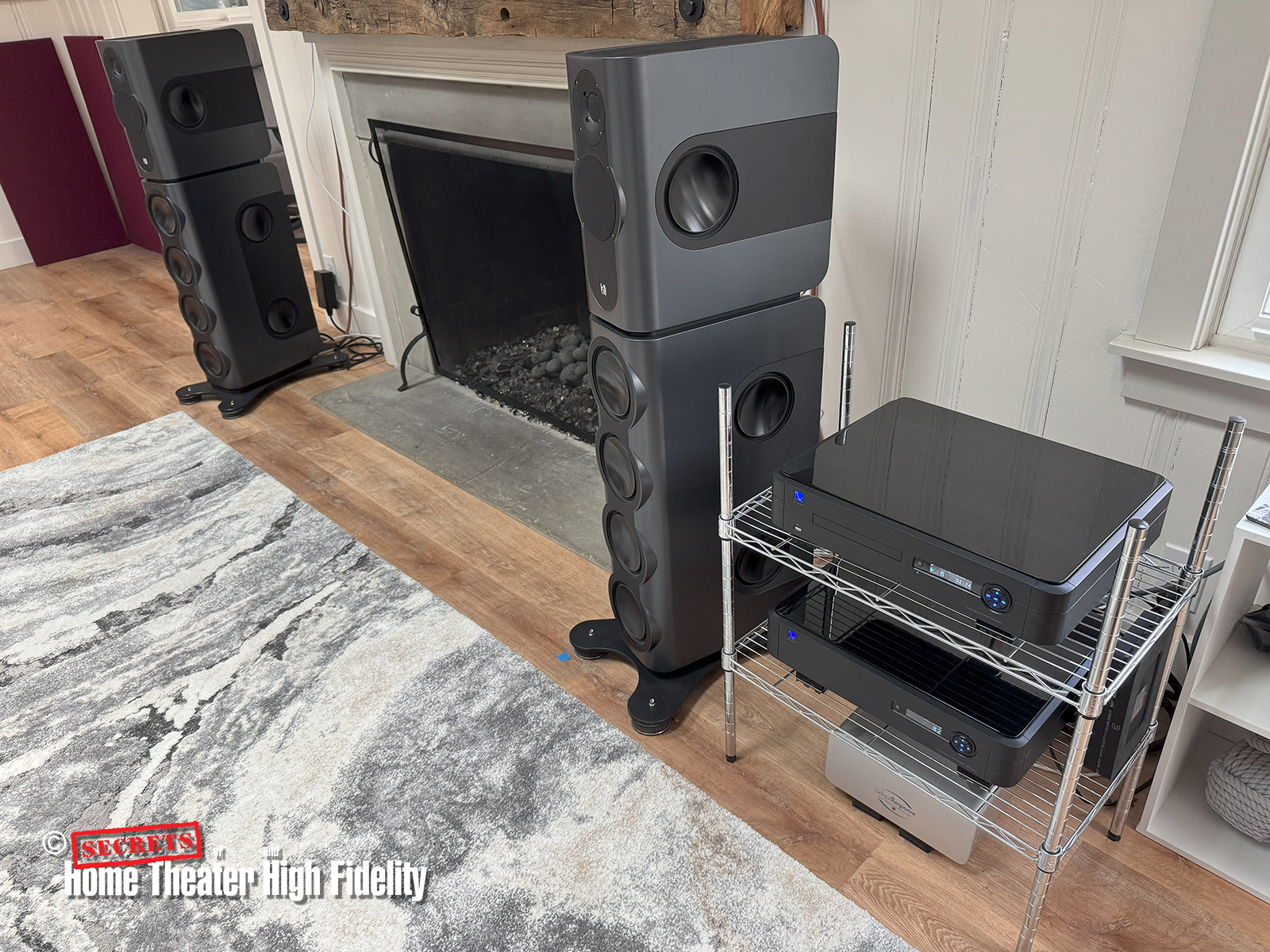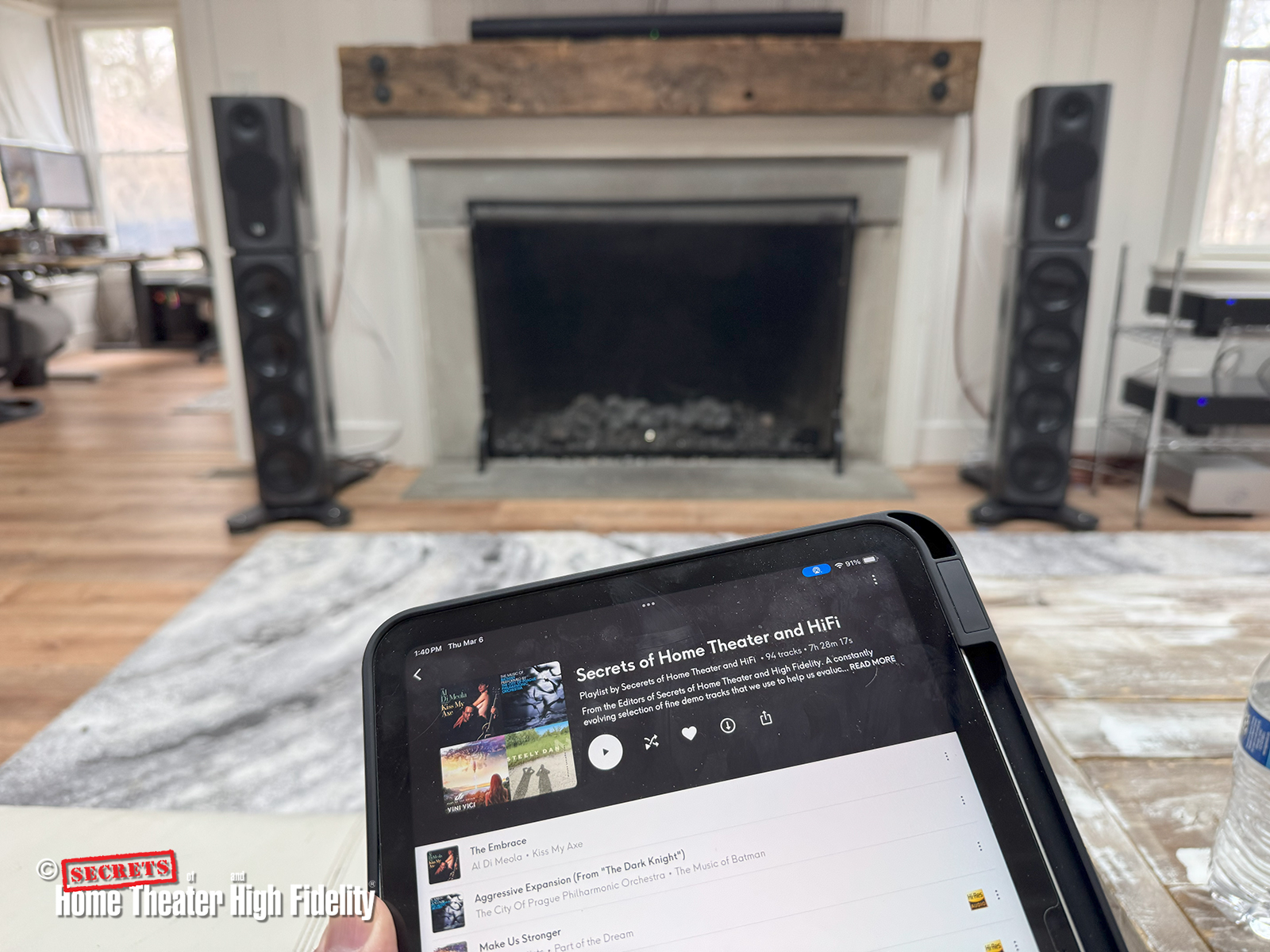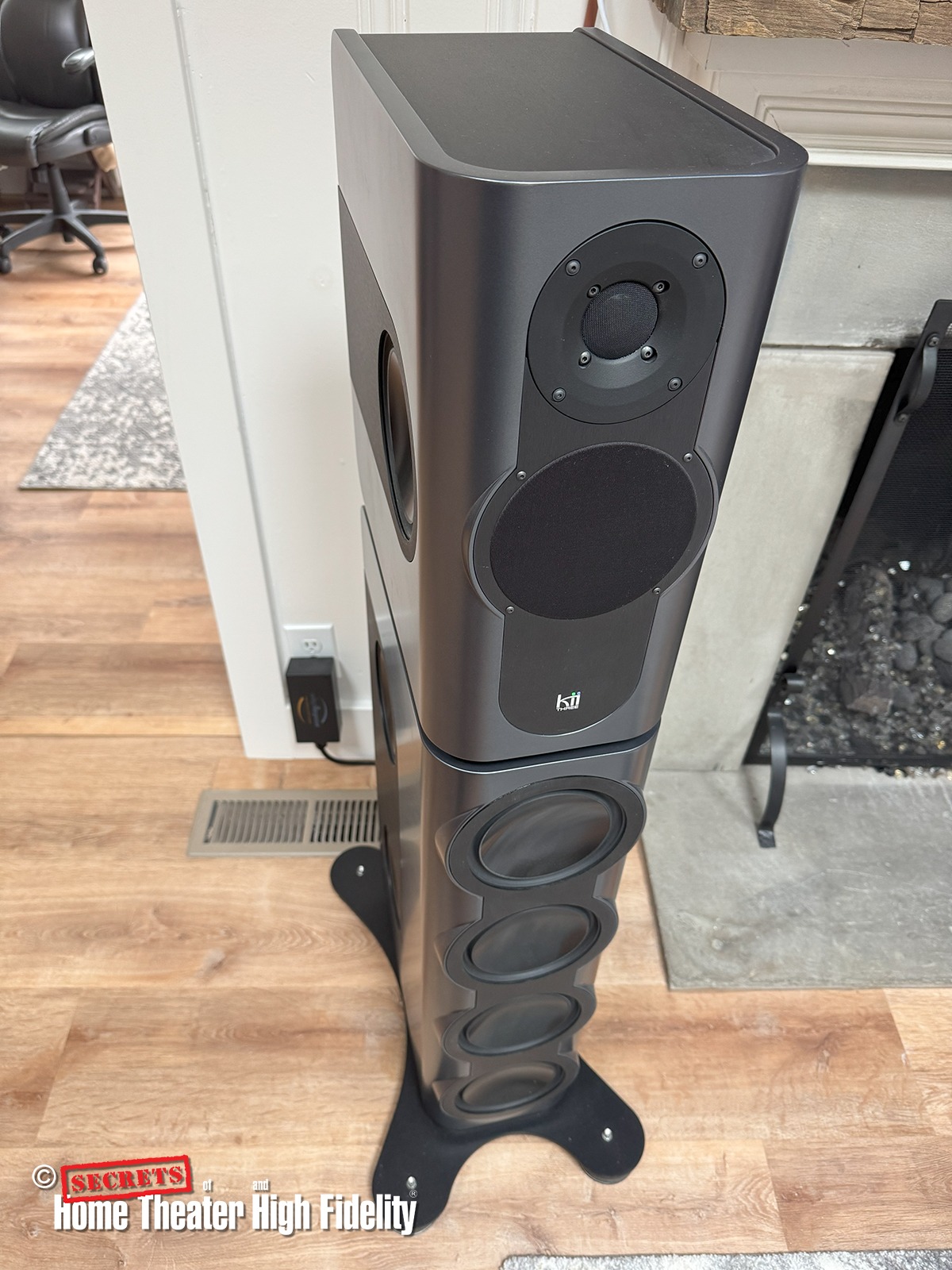And yet, in the years I’ve lived here, I’ve encountered more than a few folks with some interesting and unexpectedly hard-core audio systems, along with some surprising industry people who are essentially a stone’s throw from my home.
Jeff Garshon, owner of Reel Sound Distribution, for example, lives about twenty minutes from me, and he is the US Distributor for the audio artistry of Metaxas & Sins. It’s always a treat to pay Jeff a visit, away from an audio show, to get the occasional peek and listen to what Kostas Metaxas has been cooking up. Speaker maker Janszen Audio is just a 40-minute drive away in Columbus. I’ve heard David Janszen’s unique electrostatic loudspeakers at shows and have always come away suitably intrigued. I owe his operation a proper visit. Former Secrets reviewer Todd Cooperider is also 20 minutes away, and he is a true audio afficionado with a pretty amazing Revel Ultima Salon/Pass Labs/REL subwoofer system, who I also owe a visit to.
Then there is Norman Varney of AV RoomService, who, along with being one of our occasional contributors here at SECRETS, offers room acoustic analysis, design, and treatment services through his company as his day job. Norm knows good sound and has more than a little experience in getting rooms, acoustically, to their best state in order to show off an audio system’s potential. After I had returned from covering the recent Florida International Audio Expo, Norm texted me one day asking if I had ever heard a Kii Three BXT active loudspeaker system. Curious at the question, I replied that I had, back at the Munich High-End show a few years ago, but it was not in the best environment (it was set up in the middle of an open convention hall with other displays and booths around it). I had also heard the Kii Three monitors alone in a more traditional room setup at the same show and found them very appealing. “Well, how would you like to hear a Kii Three BXT system properly set up at my friend Doug’s house? AND… he lives just down the street from you!” Sometimes, I simply cannot believe my good luck!
So, on the appointed crisp Spring day, after Norm picks me up and takes me all of 5 minutes down the road (honestly, I could have walked and met him there, so under my nose this was), I was introduced to Norm’s most genial friend, Doug Rogers. Doug graciously welcomed us into his home and led us into his open living room and listening area to meet the subject of our travels.
For those who don’t know, the Kii Three BXT system hails from Germany and basically consists of the Kii Three fully active monitor speakers directly connected and sitting atop fully active bass enclosures, creating a modestly sized set of tower speakers. The monitors themselves have a 1-inch tweeter set in a custom waveguide, one 5-inch midrange driver, two 6.5-inch woofers (one mounted on either side panel), and two more rear-firing 6.5-inch woofers.
The BXT active bass stands each have a total of eight additional 6.5-inch woofers, four in front and two on each side. One can purchase the system as a whole or start with the monitors and upgrade them with the bass section later on. Where things get interesting is in the details. The speakers were designed by Bruno Putzeys (yes, the PuriFi, Hypex amp, and Mola Mola dude). They use advanced DSP, onboard PuriFi Class-D amplification (3,500 watts worth per speaker), and project sound in a cardioid dispersion pattern, allowing for better acoustic integration in domestic and professional environments.
The DSP that controls everything about the speaker’s behavior allows for a significant level of tweaking using various EQ and filtering options, boundary control settings, etcetera, and provides 14 memory presets for you to save your adjustments. Beyond a power connection and an ethernet-style cable link between the speakers, all they really need is a source, and you are off to the races. The speakers come with a substantial wired controller unit called the Kii Controller that acts as a lossless volume control and digital preamp. Besides being able to access all the facets of the speaker’s capabilities, it has direct coax, optical, and USB inputs (the analog inputs are on the rear base of each speaker). Their design has also allowed the Kii Three (both with and without the BXT modules) to find favor in professional recording studios as serious production tools. Their appeal to intelligent audiophiles is a sort of “icing on the cake,” if you will.
For the demo, we weren’t directly using the Kii Controller. It was stationed by the rest of Doug’s gear, and we used the PS Audio DAC remote control for basic input selection and volume control.
The rest of Doug’s system consisted of a PerfectWave SACD transport and PerfectWave DirectStream DAC Mk2 from PS Audio, a Bluesound NODE streamer, and an Audience Adept Response aR6-T4 Power Conditioner. All were underpinned (including the speakers) by EVPs (Equipment Vibration Protectors) from Norm’s AV RoomService company. The ones specifically used under the Kii speakers were custom-made for them. As I mentioned earlier, Doug’s listening area was a fairly wide open-concept space that connected to an office and kitchen area with high ceilings. Mostly untreated save for four acoustic panels (two behind the seating position and two in the front left corner, also from AV RoomService), with a lot of reflective surfaces and a typical number of tasteful furnishings, bookshelves, and such. It was a comfortable, inviting, and unpretentious listening space. The speakers were roughly 8.5 feet apart, and we sat about 11 feet away, and the speaker’s DSP was set to a default flat response with no additional EQ for frequency peaks or dips.
For a set of speakers that are only 8 inches wide and whose height tops out at 47 inches, the Kii Three BXT threw out a massive soundstage into the listening area. As I said, I’ve heard the Kii Three bookshelf speakers alone in a decent environment and was impressed with how they sounded. Adding the BXT active bass section turns these speakers into absolute monsters! Their clean, modern design might deceive one into expecting that these speakers would sound dry and clinical. Don’t you believe it! Track after track, the sense of transparency, balance, image scope, and musical fidelity that I was hearing from the Kii system was several notches beyond impressive. Add to this the seamless low-end integration and borderline stupid bass extension and impact, it made for one of the most satisfying and enjoyable music demos that I have been to in quite some time. These speakers sounded like they should be at least three times their physical size!
Since I am more than a little familiar with how my own room sounds and what limitations it imposes on various speakers I have in for review, I pulled up my Qobuz playlist and started going through familiar test tracks. I listened for any voids or peaks in the “power band” (between 100 and 300 Hz) that can either suck the drive out of hard rock music or make it sound too thick and heavy. AC/DC’s (“Girl’s Got Rhythm”), Rush’s (“Distant Early Warning”), and Slash’s (“Oh Well”) all had the desired punch and drive in the bass lines, kick drums, and lower register keyboards, without any hint of wooliness or too much perceived warmth to the sound. Everything had a heightened sense of tangibility to its presentation, and as boys will be boys, the speakers did not flinch or show any hint of compression when the volumes got slightly silly.

Petra Magoni & Ferruccio Spinetti, “Live à Fip – Musica Nuda”
I also listened for any peaks in the midrange reproduction that would adversely affect vocals or make singers sound too close. Listening to a couple of my favorite vocal tracks (“You’re the One That I Want” by Musica Nuda and Geoff Castellucci’s “The Sound of Silence”) revealed that the Kii Three BXT kept vocals sounding focused and nicely balanced in the mix. Neither male nor female voices exhibited any undue artifacts or sonic “funkiness” that I could detect.
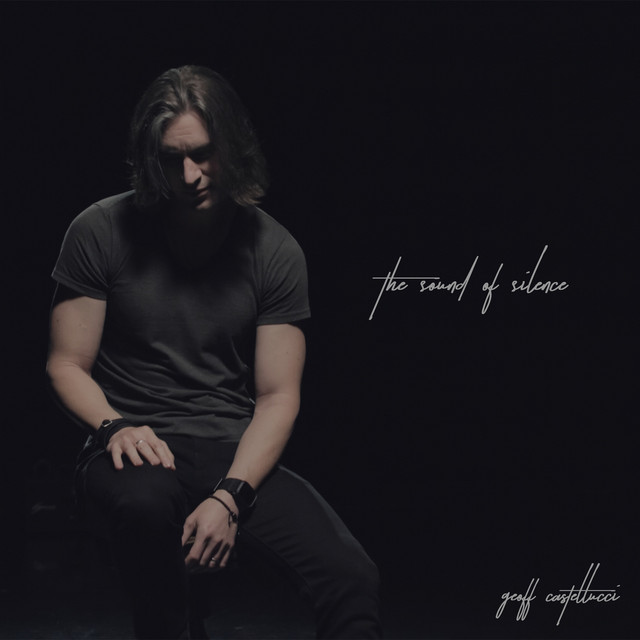
Geoff Castellucci, “The Sound of Silence”
“The Sound of Silence” had the added bonus of unleashing some powerful electronic bass into the room, which was reproduced with the seeming intensity of a nicely integrated pair of subwoofers (although none were there) that had been on a date with a rather large sledgehammer. It was utterly gobsmacking that that level of bass impact was coming from those “non-ginormous” speakers.
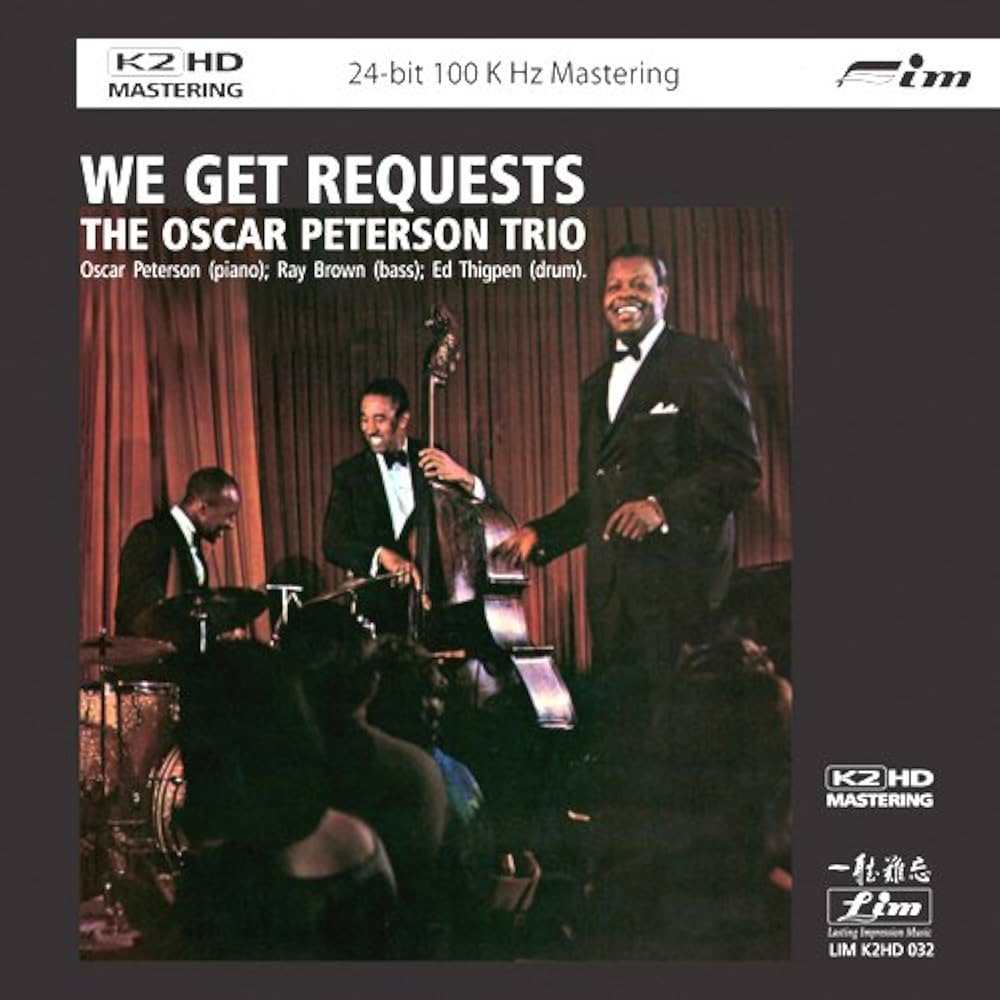
The Oscar Peterson Trio, “We Get Requests”
But probably one of my favorite things that I heard was Oscar Peterson’s “You Look Good To Me” from the We Get Requests album. For this session, Doug was spinning his Japanese K2 HD remastered CD edition. Just the depth, detail, clarity, and sense of control coming from Ray Brown’s bowing of the bass at the beginning and end of the track was outstanding. The lovely ring and decay from Oscar Peterson’s tinkling of the ivories was delightful, and hearing his vocal “scatting” in the background as he really got into the groove was a nice detail that the Kii system highlighted. Ed Thigpen’s cymbal work was perfectly sublime, with the cymbals sounding properly brassy and detailed. The imaging, both by perceived width and depth, was also nicely immersive, successfully imparting that illusion of being in the general recording space with these titans of Jazz.
We spent about a good three hours listening to all kinds of material, each of us discovering stuff that we hadn’t heard before and just genuinely enjoying the good company, the good music, and the exceptionally good system. I’ve always been a believer in active loudspeakers, and listening to a well-designed and implemented active system such as this, or something like the Focal Diva Utopias that I heard at the Florida Audio Expo, just cements that appreciation further. Don’t get me wrong, there are still plenty of passive loudspeakers out there that I like and enjoy but once you listen to something like the Kii Three BXT system, well…it’s kind of like comparing a lightsaber to a baseball bat. No matter how well-designed a passive loudspeaker is, it will always be a blunt instrument in comparison to a proper active alternative. And with its cardioid dispersion characteristics, DSP resources, advanced drivers, and powerful, cool-running PuriFi amplification, the Kii Three BXT system is just that more of a modern and elegant, almost turnkey solution. I want a set. There, I said it. I can’t afford a set, but I want one. If you can afford a set, the whole shooting match retails for just over $31,000.00 US. Yes, it is a chunk of change, but it would be fair to say that these speakers could go toe-to-toe with significantly more expensive products and still come out on top. Kii Audio has done its job here today, in spades. If nothing else, it has given me another point of reference to judge other speakers by.
It really can be good to meet your heroes, after all.
The author wishes to thank local resident and audio nut Doug Rogers for his gracious hospitality and the sharing of his system along with Norman Varney for arranging the meet and for being a genuinely swell fella.


